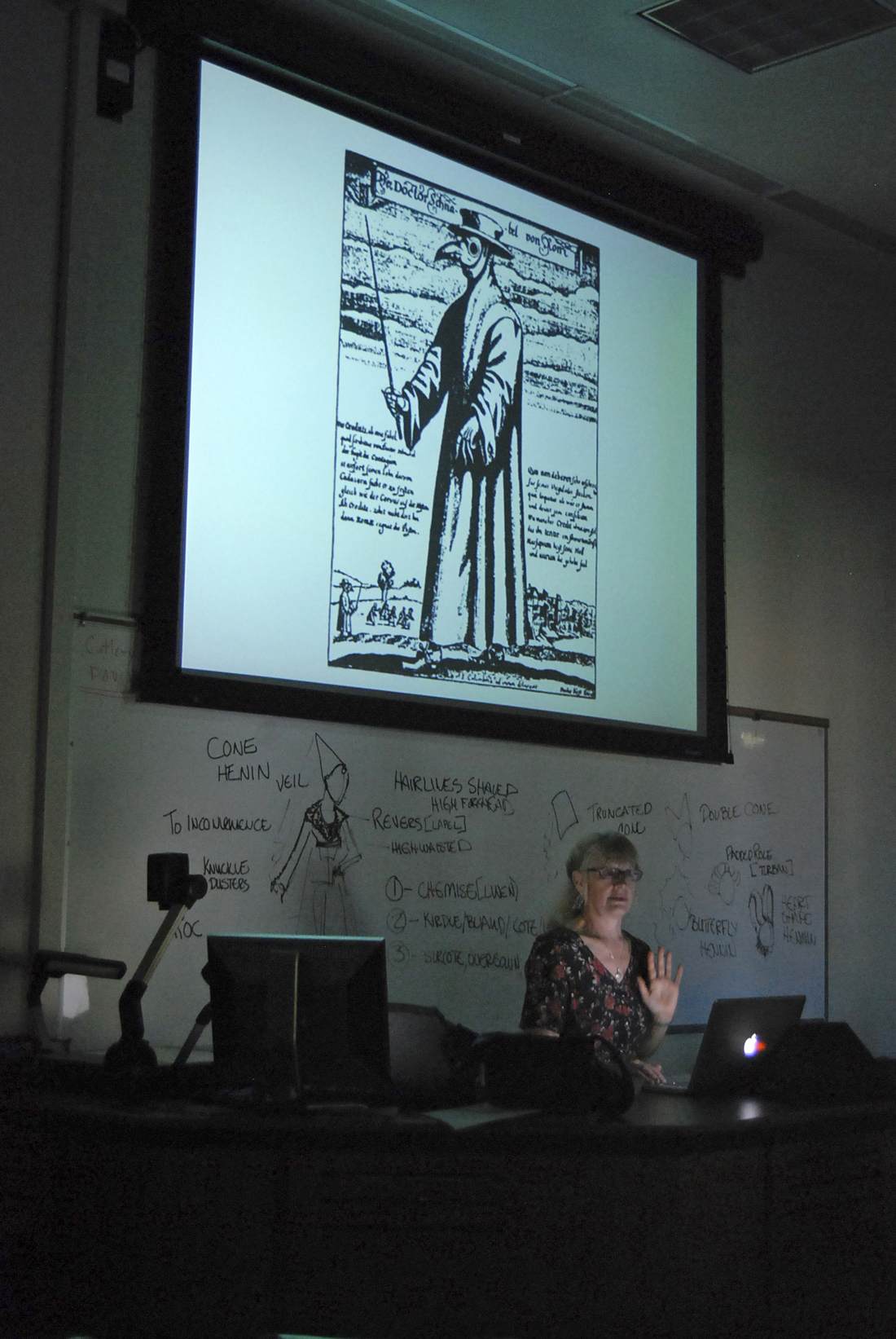Class displays clothing from a historic view
The History of Clothing class is an overview of clothing from the Egyptian era to current times. The students look at the political and economic side of western history and how each of those personifies themselves in the clothes worn in the specific era.
“A lot of different things influence clothes and my class explores all of that. We look at the history and how it influences the clothes,” said Nancy Hills, who teaches the course.
Hills reviews 25 eras. Women getting the right to vote, social changes and the stock market crashing are all events that had a significant effect on the clothing of the day.
When the stock market crashed, the hemlines became longer because people needed something a little more traditional to hang on to, Hills said. In WWII, things became short because fabric was rationed. Women also had padded shoulders and looked like they were a part of the military.
“Things like that have a real influence on the way things look,” Hills said.
The class also relates the architecture to the styles of the time. Pointed sleeves and hats were a reflection of gothic cathedrals. Hills said music, literature, and art forms all have an impact on clothes, also. The clothes can tell lot about that time period. Hills said if students can understand what was going on during an era, they can better understand why people wore the things they did.
“It is human nature to care about what you look like. Clothes are constantly changing. It is a really fascinating study, seeing and figuring out why people wore the things they wore,” Hills said.
Hills has a general degree is in theater and studied costume design in graduate school. She said it is very important for costume designers to know the history of clothes because most plays are set in a certain time period, so as to accurately design clothes for that play. She said it is important to know not just what people wore, but why.
As seen with vintage and 80s clothing coming back, the style of clothes swings back and forth. Hills said clothes don’t really repeat themselves, people just always want something different.
“It is human nature to want change. We just always want something different. We are a being that wants change,” she said.
When talking about today’s trends, with skin-tight jeans and shirts that hug every curve, Hills says that the style will go back to being baggy and more of a loose fit. She predicted that clothing will become a lot more formal in the years to come since the style is so casual now.
“It is so much easier when students take this class so that they know the clothing of certain periods,” she said. ” It is a depth humanities course. I have students who take this class even if they don’t need it.”
The History of Clothing course can be taken by anyone and does not have any prerequisites.
Robert Birdzy, a junior studying engineering, said he highly enjoys the class.
“I really like the way she has the material laid out. We interact with the book and cross the information several different times in several different ways,” he said.
Hills said she understands that everyone learns differently and she wants to be able to present the material in every way possible. To have her students get the general understanding of what the book is saying, she has them pick out three influences from that era that they read about. There is also a quiz students can do while they are reading the book. She then has a discussion in class and does drawings on the board that students can follow along in sketchbooks. By doing this, students are getting every kind of learning and can really understand the material, orally and visually, Hills said.
Hills said she issues a take home final including a variety of problems, from short essay to identifying articles of clothing and what era they came from. Hills said she doesn’t expect her students to memorize everything because there is so much to take in.
“I give them a tsunami of information, if they can pinpoint the silhouette I am happy,” Hills said.
Though she has been studying clothing for years, she said she always finds something new.
“It is such a fascinating study. I even have students who take my class who don’t even need it. We have a lot of fun in there,” Hills said.
– chelsee.niebergall@aggiemail.usu.edu

